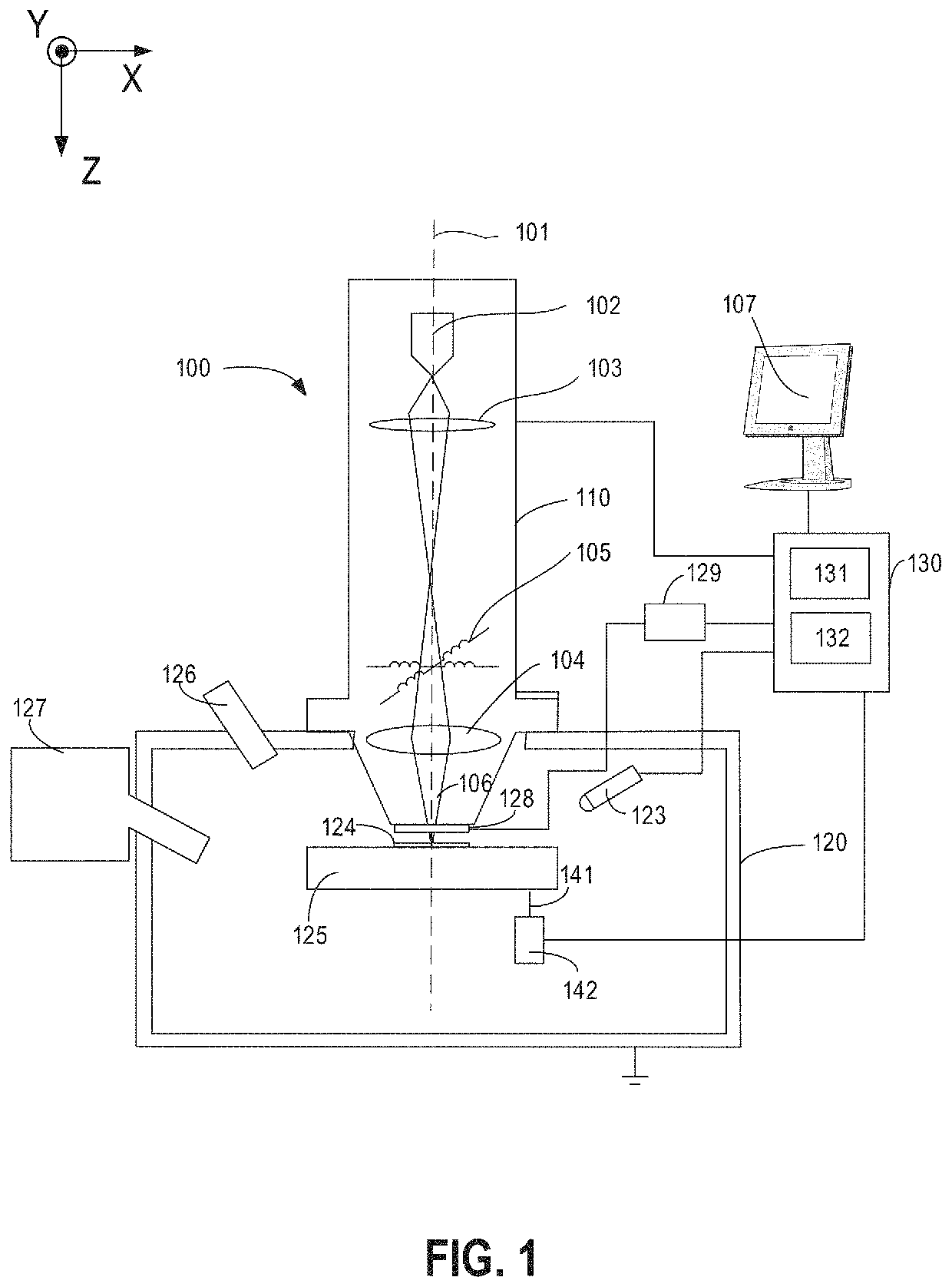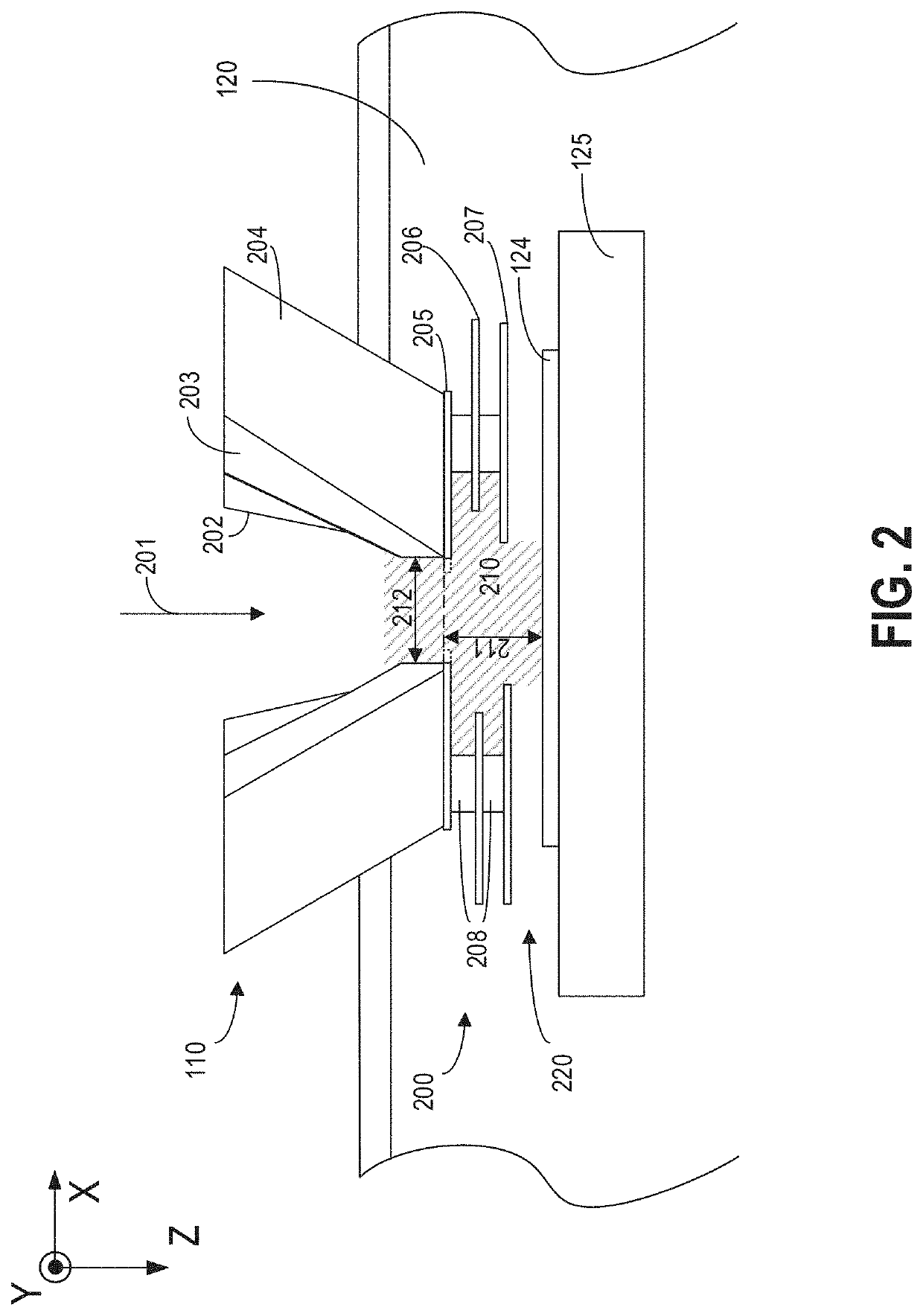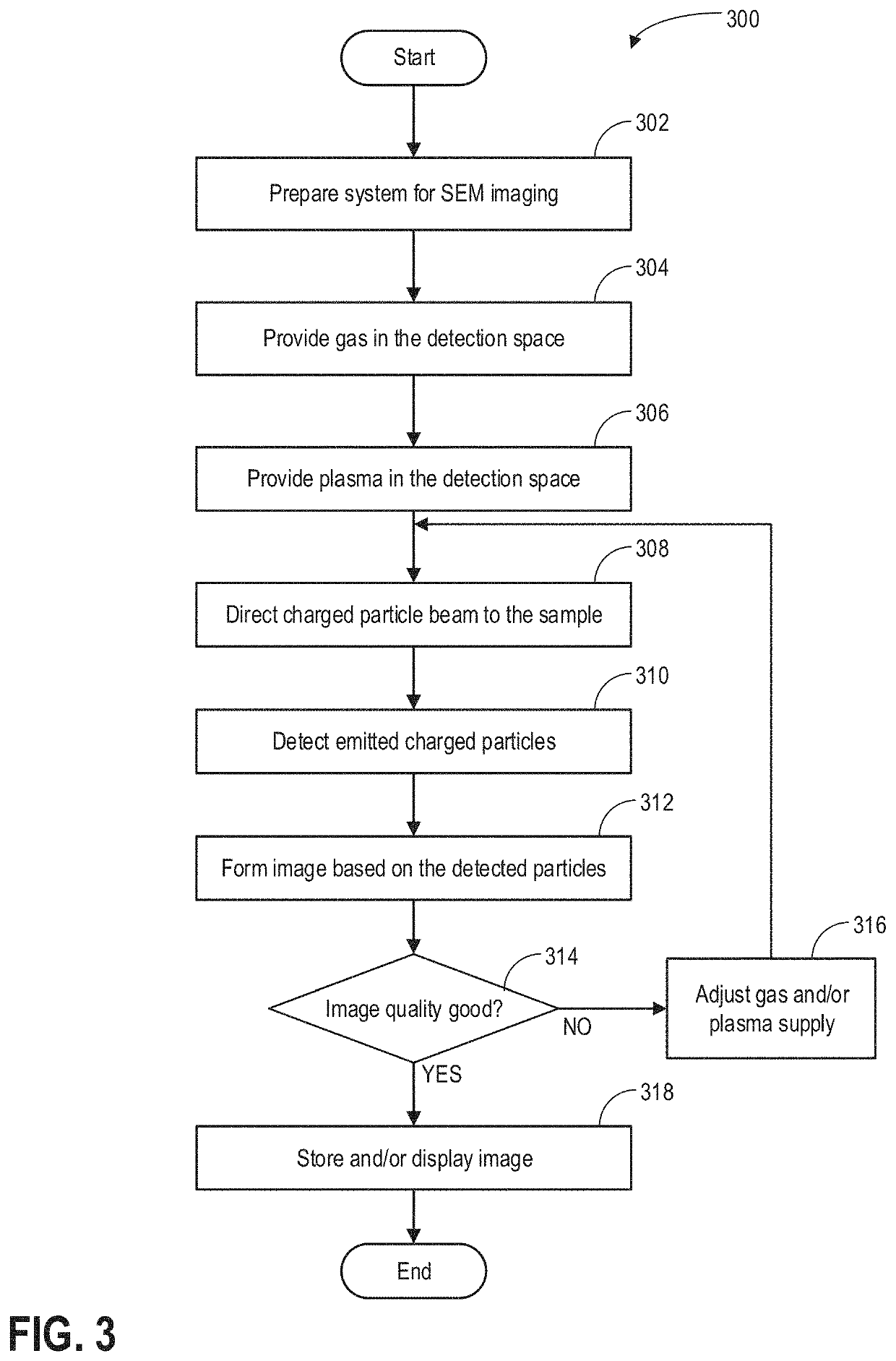Method and system for plasma assisted low vacuum charged-particle microscopy
a technology of plasma assisted and charged particles, applied in the field of plasma assisted low vacuum charged particle microscopy, can solve the problems of low signal to noise ratio of sem image, inferior resolution and contrast of low vacuum sem and high vacuum sem, so as to reduce beam scattering, improve image quality, and increase detector gain
- Summary
- Abstract
- Description
- Claims
- Application Information
AI Technical Summary
Benefits of technology
Problems solved by technology
Method used
Image
Examples
Embodiment Construction
[0017]The following description relates to systems and methods for performing charged particle microscopy in a gaseous environment using a low vacuum microscope, such as a low vacuum scanning electron microscope (SEM) of FIG. 1. The sample positioned in a sample chamber is irradiated with a charged particle beam formed in a particle-optical column coupled to the sample chamber. The sample chamber has a vacuum lower than the vacuum in the particle-optical column. For example, the column, especially the electron source, is pumped to a high vacuum, such as higher than 10−5 torr, for generating the electron beam. The sample chamber may be pumped to 0.01 torr to 50 torr. The difference in vacuum from the sample chamber to the electron source within the column may be achieved via different stages of pumping and multiple pressure limiting apertures (PLAs) positioned along the column.
[0018]The low vacuum microscopy system may be operated according to the method of FIG. 3 for plasma assisted...
PUM
 Login to View More
Login to View More Abstract
Description
Claims
Application Information
 Login to View More
Login to View More - R&D
- Intellectual Property
- Life Sciences
- Materials
- Tech Scout
- Unparalleled Data Quality
- Higher Quality Content
- 60% Fewer Hallucinations
Browse by: Latest US Patents, China's latest patents, Technical Efficacy Thesaurus, Application Domain, Technology Topic, Popular Technical Reports.
© 2025 PatSnap. All rights reserved.Legal|Privacy policy|Modern Slavery Act Transparency Statement|Sitemap|About US| Contact US: help@patsnap.com



